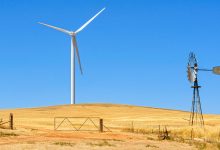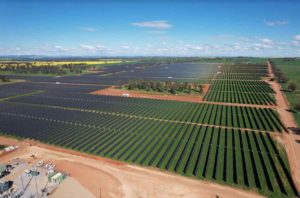Recently released capacity statistics from the International Renewable Energy Agency [IRENA] for 2019 confirm the special status of Australia as the global pathfinder for renewable energy.
Australia is deploying new renewables 10 times faster per capita than the global average and 4 times faster per capita than in Europe, China, Japan or the US. (See figure 1 below).
In each of the last two years, Australia has been deploying new renewables faster per capita than any other large (population > 1 million) country.
About 99% of new renewables in Australia are solar PV and wind. This is highly replicable in other countries because nearly everywhere has wind and/or solar resources.
Australia is a pathfinder for the 70% of humanity who live in the sunbelt (lower than 35 degrees of latitude) where there is high and consistent solar insolation and no cold winters [Pathway to 100% RE].
This is where most of the growth in population, energy use and greenhouse emissions are occurring.
Australia demonstrating a successful transition will be an important reference point for countries to also adopt this path.

As a result, the fraction of renewable electricity (including rooftop solar) supplied to Australia’s National Electricity Market (NEM), which was 15.5% in 2017 (and nearly 25 per cent in the 12 months to end February) may pass 35 per cent in 2022. This in turn would cause declining greenhouse emissions.
The rapid deployment of PV and wind starting in 2018 is clearly visible in Figure 2 (also below).

Australia is demonstrating that a rapid switch to solar and wind is feasible at low cost, with consequent reduction in emissions. About 85% of Australia’s greenhouse emissions are caused by use of fossil fuels.
The increasing fraction of renewable energy in the NEM is not causing much change in the wholesale price of electricity (Figure 3 below).
Thus, the cost of emissions reductions through deployment of wind and solar is low so far. Since the cost of wind and solar continues to fall this may remain true.

Net new coal continues to fall in significance because coal power stations are retiring almost as fast as new coal power stations are opening.
There has been a stagnation of growth in solar PV deployment, caused by large falls in the Chinese market, which has fallen from 46% of the global total in 2015 to a more sustainable fraction of 31% in 2019.
Excluding China, global solar PV sales have grown at an average rate of 20% per year over 2014-19, which is a doubling every 3.5 years.










